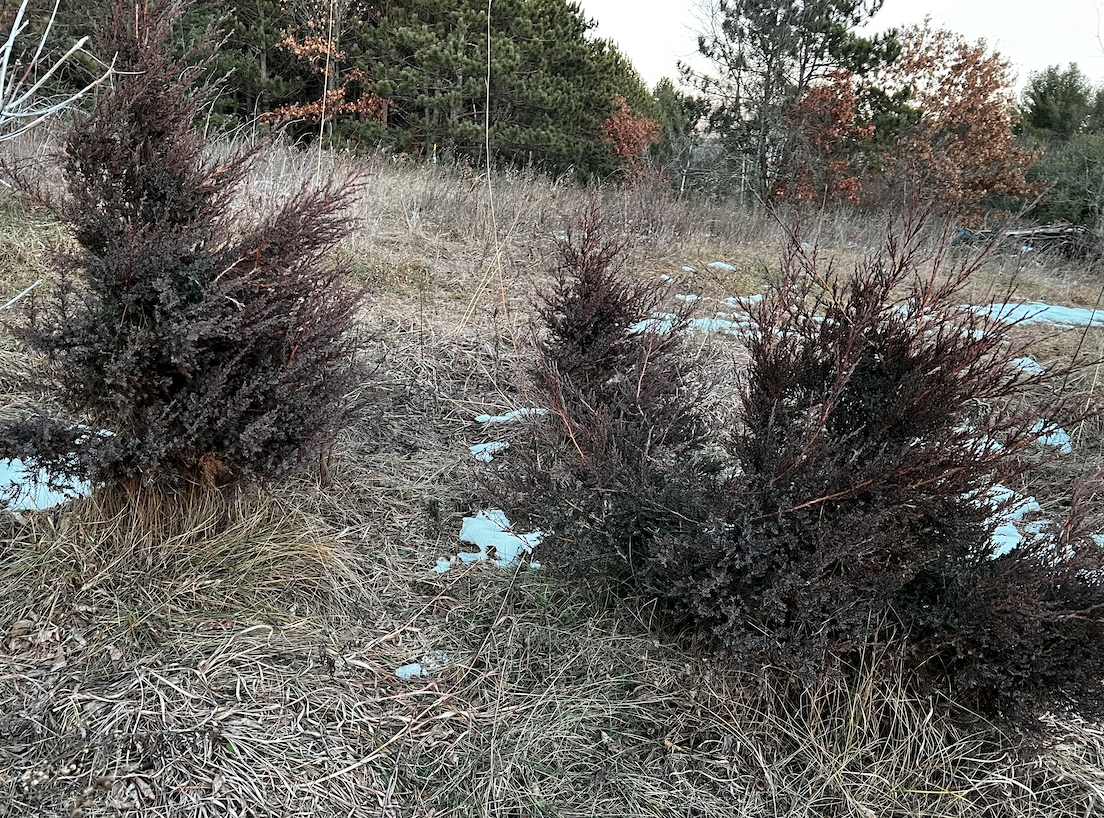Let the hate mail begin! Half-kidding, of course, but the Eastern red cedar (Juniperus virginiana) is one species that landowners across the country love to hate. If you’re an orchard guy like me, you probably lean toward prejudice. That’s because the red cedar is an alternate host of cedar-apple rust, a destructive and disfiguring disease for nearly all apple and crabapple varieties.
This isn’t to say the red cedar doesn’t have its benefits. It’s one of the most drought, heat and extreme-cold-tolerant trees in North America. It also thrives on the worst of soils (sand), and provides food for other wildlife (cedar waxwing songbirds). However, the tree isn’t endangered, not by a longshot. Therefore, when I find these trees growing on properties I am managing for apple trees and (and better deer hunting), the cedars are going bye-bye.
Eradicating red cedar isn’t particularly difficult on small parcels. I employ the famous “hack-n-squirt” tactic (cut and treat with glysophate) whenever small seedlings emerge. I use the larger trees for fence posts. They make for awesome posts, by the way. I’ve never had to deal with them on larger properties, but I have several Texas friends who have burned and bulldozed hundreds if not thousands of acres of cedars (“junipers”) with great success.
READ MORE: HOW TO MANAGE RED CEDAR
If you’re dealing with a small property and don’t have fruit trees, you needn’t worry about it. However, if you’re trying to grow any variety of apple, don’t believe the nursery propaganda about “blight resistance.” If your land has red cedars, you’re wasting time and money by leaving them be and trying to plant apple trees.
Having a hard time identifying them? Here’s a DNR version of how to do that:
“Dense crowned evergreen tree with unflattened branchlets covered with closely packed green scales. Juvenile foliage, in contrast, consists of prickly single needles.] Round ¼” diameter cones fleshy green turning waxy blue. Bark ash gray to reddish brown and scaly. Tolerant of poor soils, intolerant of fire, widely distributed by cedar waxwings.”

READ MORE: THE 5 BEST APPLE TREES TO PLANT
